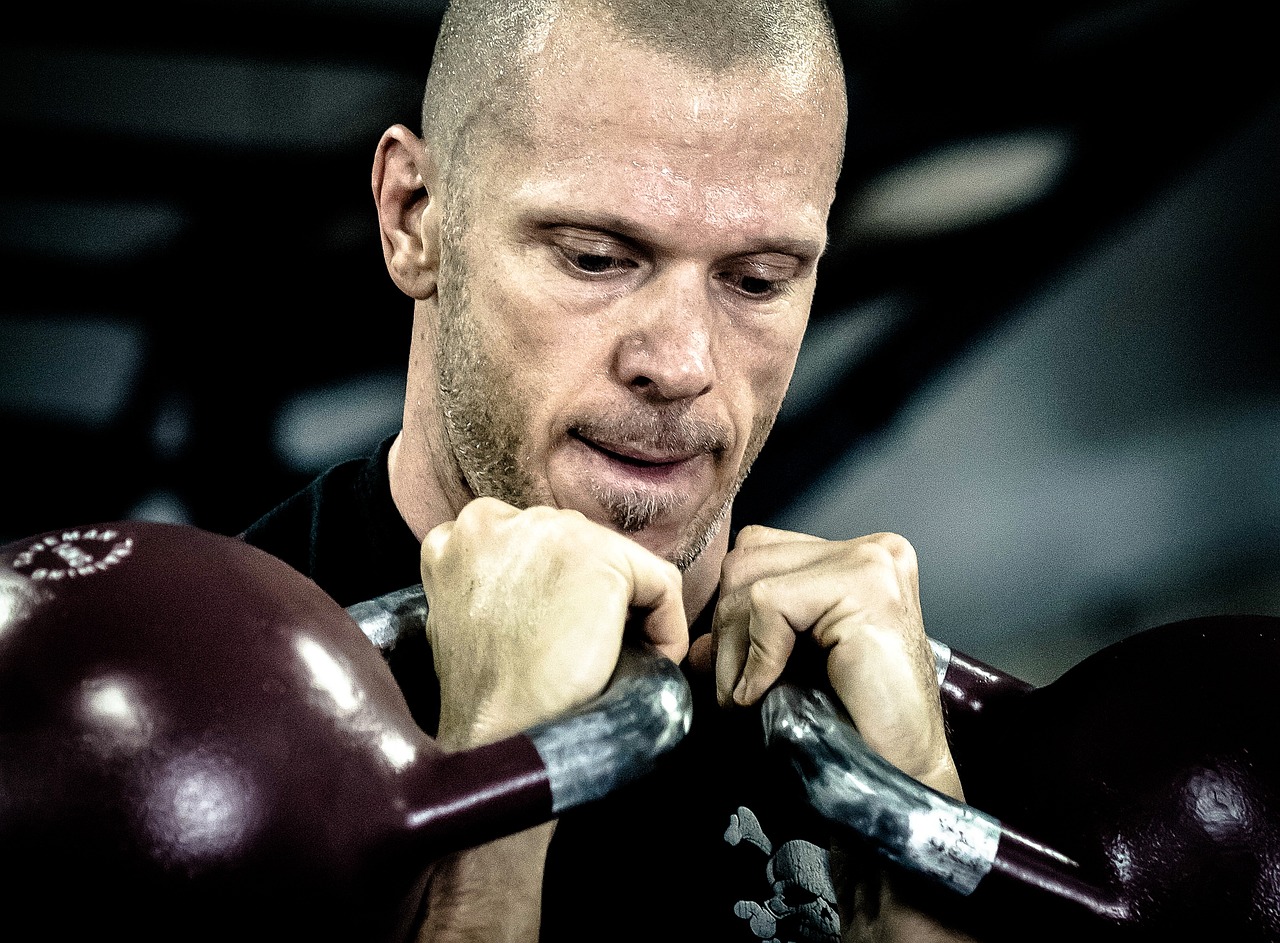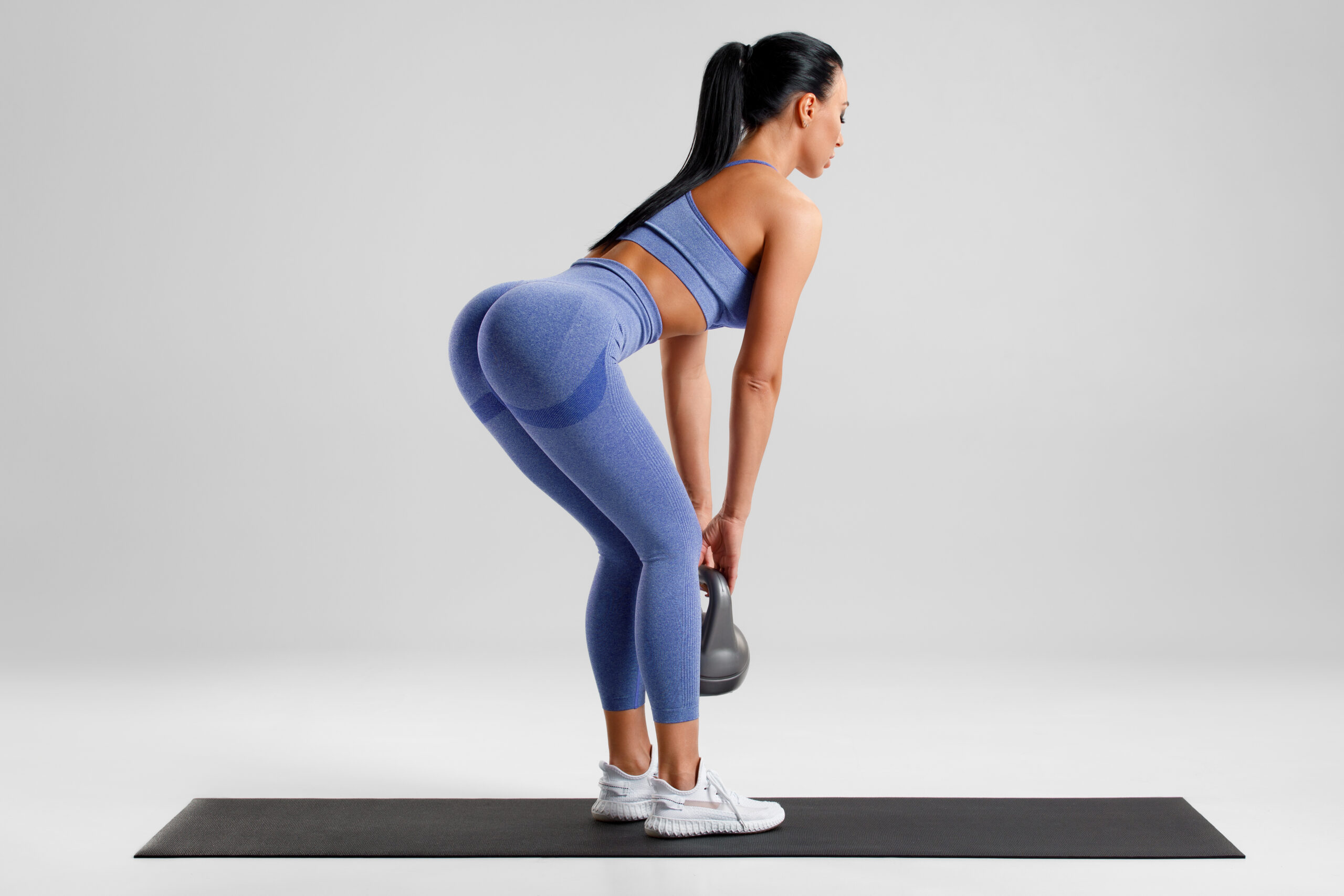Kettlebells are a versatile piece of equipment that can be used to target a variety of muscle groups, including the glutes. The glutes, or the muscles in the buttocks, are an important muscle group to target for overall strength and stability. A strong gluteal muscle group can help improve posture and reduce the risk of injury.
One of the best kettlebell exercises for targeting the glutes is the kettlebell swing. To perform the kettlebell swing, start by standing with your feet slightly wider than hip-width apart and your knees slightly bent. Hold the kettlebell with both hands in front of your body. Swing the kettlebell back between your legs, then drive your hips forward to swing the kettlebell up to chest height. Make sure to keep your arms straight and engage your core throughout the movement. Repeat this exercise for 10-15 reps and 3-4 sets.
Another effective kettlebell exercise for the glutes is the kettlebell deadlift. To perform the kettlebell deadlift, start by standing with your feet hip-width apart and the kettlebell on the ground in front of you. Bend at the hips and grasp the kettlebell with both hands. Keep your back straight as you lift the kettlebell off the ground, squeezing your glutes at the top of the movement. Lower the kettlebell back down to the ground, maintaining control throughout the movement. Repeat this exercise for 10-15 reps and 3-4 sets.
The kettlebell lunge is also an excellent exercise for targeting the glutes. To perform the kettlebell lunge, start by holding a kettlebell in the rack position (resting on the back of the forearm) on one arm. Step forward with one foot and lower your body until your thigh is parallel to the ground. Push back up to the starting position and repeat on the opposite side. Make sure to keep your chest up and your core engaged throughout the movement. Repeat this exercise for 10-15 reps and 3-4 sets for each leg.
Lastly, the kettlebell sumo squat is another great option to target the glutes. To perform the kettlebell sumo squat, start by standing with your feet wider than shoulder-width apart and toes turned out. Hold the kettlebell in front of you with both hands. Lower your body as if you were sitting back into a chair, keeping your chest up and your back straight. Push through your heels to return to the starting position. Repeat this exercise for 10-15 reps and 3-4 sets.
It is important to use proper form and start with a weight that is appropriate for your fitness level when performing kettlebell exercises. As you become more comfortable with the movements and your strength increases, you can increase the weight of the kettlebell. Incorporating kettlebell exercises that target the glutes into your workout routine can help you achieve a stronger and more toned buttocks.
It is always important to consult a doctor or a fitness expert before starting any new workout program.
Here is a sample kettlebell glute workout program that can be done at home or in the gym:
- Kettlebell swings: 3 sets of 12-15 reps
- Kettlebell deadlifts: 3 sets of 12-15 reps
- Kettlebell lunges: 3 sets of 12-15 reps (per leg)
- Kettlebell sumo squats: 3 sets of 12-15 reps
- Kettlebell glute bridges: 3 sets of 12-15 reps
- Kettlebell single leg deadlifts: 3 sets of 12-15 reps (per leg)
It is always important to warm up before starting any workout, so make sure to do a few minutes of light cardio, such as jogging in place or jumping jacks, and some dynamic stretching before starting.
It is important to use proper form and start with a weight that is appropriate for your fitness level when performing kettlebell exercises. As you become more comfortable with the movements and your strength increases, you can increase the weight of the kettlebell.
It is important to note that to see results, you will also need to maintain a calorie deficit by eating fewer calories than you burn through exercise and daily activities. A healthy diet and regular cardio exercise should be included in your weight loss plan.
It is always important to consult a doctor or a fitness expert before starting any new workout program.

 Politics2 years ago
Politics2 years ago
 Politics1 year ago
Politics1 year ago
 Health1 year ago
Health1 year ago
 Politics1 year ago
Politics1 year ago
 Politics2 years ago
Politics2 years ago
 Politics1 year ago
Politics1 year ago
 Entertainment2 years ago
Entertainment2 years ago








